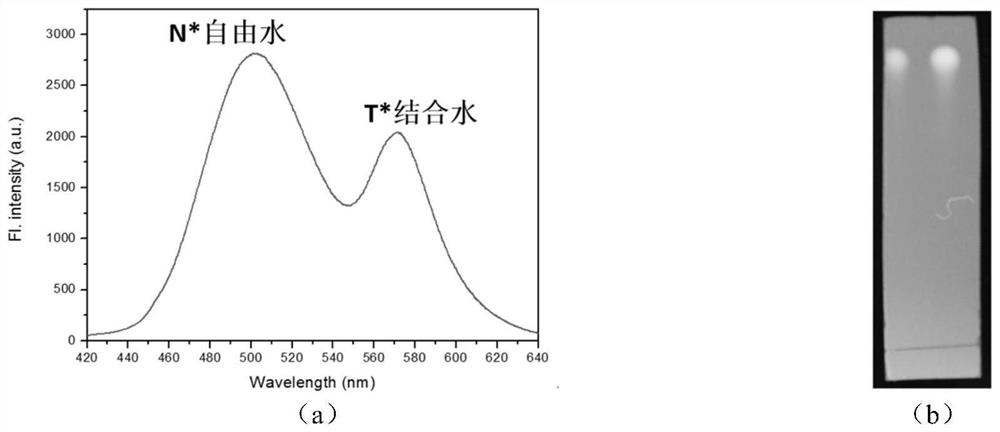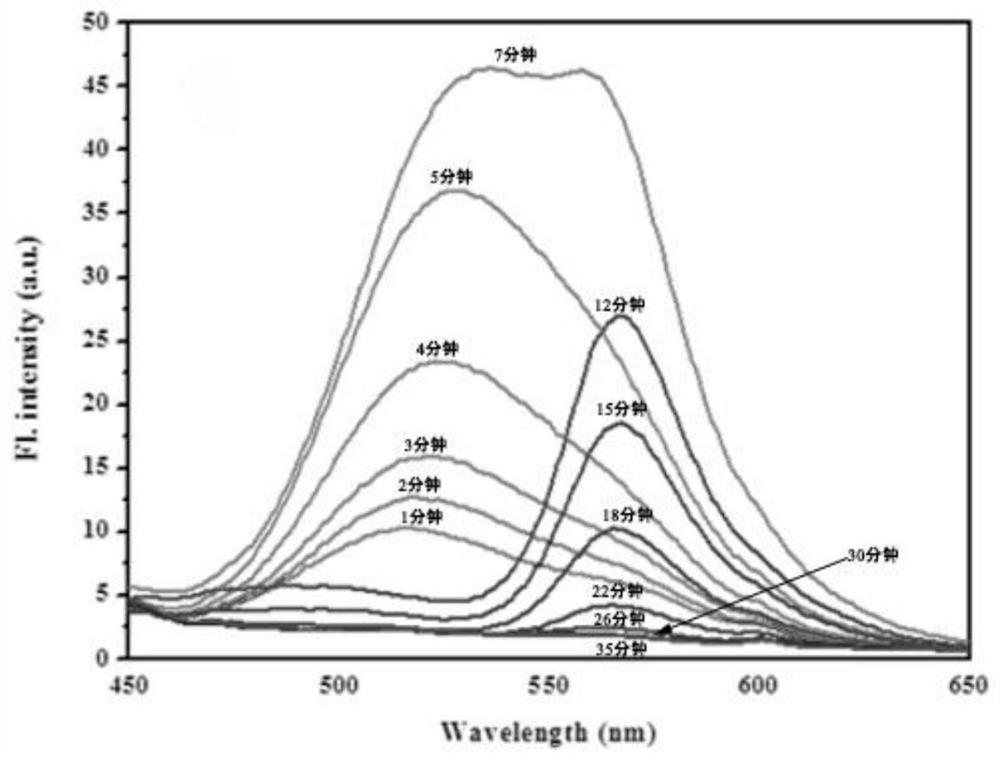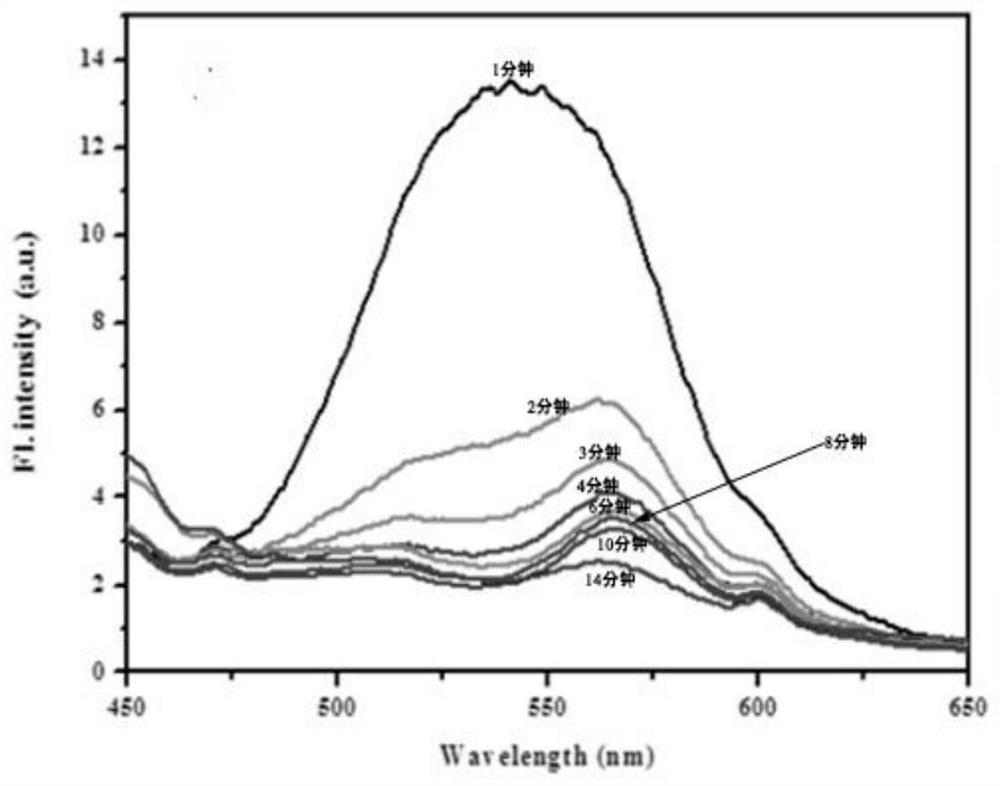Method for on-line fluorescence detection of water form in soil cultural relics
A technology for soil cultural relics and fluorescence detection, which is applied in the direction of fluorescence/phosphorescence, measuring devices, and material analysis through optical means, and can solve the problems that it is difficult to grasp the form and content of moisture in soil cultural relics in real time
- Summary
- Abstract
- Description
- Claims
- Application Information
AI Technical Summary
Problems solved by technology
Method used
Image
Examples
preparation example Construction
[0033] 2. Preparation of simulated samples of water-containing soil cultural relics: due to the non-renewability and preciousness of cultural relics, the simulated samples of soil cultural relics were used instead of actual cultural relics. The simulated samples were pressed by molds to obtain cylindrical simulated soil samples with a diameter of 1 cm and a height of 0.8 cm. In order to evaluate the changes of different water forms before and after the reinforcement of soil cultural relics, tetraethyl orthosilicate hydrolysis and condensation solution was used as a reinforcement agent, which was added to the simulated soil sample by drip infiltration, and then sealed at room temperature for 4 hours to obtain the reinforced soil sample. In order to make the unreinforced and reinforced soil samples contain a certain amount of water, the simulated soil samples before and after reinforcement were placed in a water vapor container to absorb moisture for 2-8 hours, so as to obtain unr...
Embodiment 1
[0037] Add 6.8014g of o-hydroxyacetophenone, 10.600g of p-diethylaminobenzaldehyde, 75mL of absolute ethanol and 15mL of 50% KOH solution into a 250mL round bottom flask in sequence, heat, stir and reflux for 1h, and place for 10h. Then pour it into 150mL of secondary water, and neutralize it with hydrochloric acid, let it cool down, lower the temperature, and precipitate out. The precipitate was filtered and vacuum dried to obtain chalcone. Add 1.5 g of the chalcone synthesized above to a 150 mL round bottom flask containing 50 mL of absolute ethanol, then slowly add 5 mL of 20% NaOH solution under vigorous stirring, and then carefully add 18 mL of 15% hydrogen peroxide solution within 0.5 h. The reaction mixture was stirred at 30° C. for 3.5 h, then poured into 100 mL of secondary water, neutralized with hydrochloric acid, allowed to cool down, and precipitated out. The precipitate was filtered, washed three times with secondary water, and dried naturally to obtain the fluo...
Embodiment 2
[0042] The preparation method of the probe and the simulated soil sample in this example are as in Example 1.
[0043] The consolidated soil sample was placed in a water vapor container for moisture absorption for 2 hours, thereby obtaining a consolidated soil sample containing moisture. Then introduce the acetone solution of 200mL FE into the water-containing reinforced soil sample, and measure the fluorescence emission spectrum of the soil sample at different times. The results are as follows: image 3 shown. It can be seen from the figure that the characteristic fluorescence peak with a wavelength of about 520nm is the response of free water in the soil sample, and the characteristic fluorescence peak with a wavelength of about 570nm is the response of bound water in the soil sample. Under the same condition of moisture absorption time, compared figure 2 The volatile water form of the unreinforced soil sample changes at different times. It can be seen that the correspond...
PUM
| Property | Measurement | Unit |
|---|---|---|
| diameter | aaaaa | aaaaa |
| particle diameter | aaaaa | aaaaa |
Abstract
Description
Claims
Application Information
 Login to View More
Login to View More - R&D
- Intellectual Property
- Life Sciences
- Materials
- Tech Scout
- Unparalleled Data Quality
- Higher Quality Content
- 60% Fewer Hallucinations
Browse by: Latest US Patents, China's latest patents, Technical Efficacy Thesaurus, Application Domain, Technology Topic, Popular Technical Reports.
© 2025 PatSnap. All rights reserved.Legal|Privacy policy|Modern Slavery Act Transparency Statement|Sitemap|About US| Contact US: help@patsnap.com



